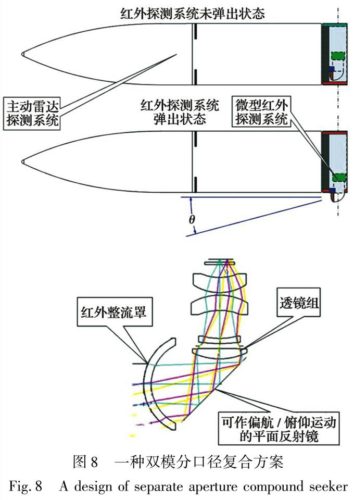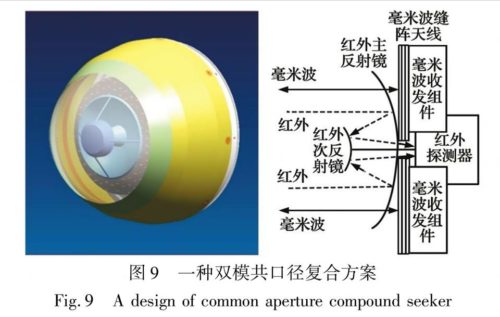A diagram from a research paper written by the China Airborne Missile Academy suggests using separate aperture compound seeker for the country’s next generation long-range air-to-air missile.

The authors proposed using the same approach as the Israeli Stunner missile but they suggest housing the infrared (IR) seeker behind the radar seeker and the IR sensor uses a periscope to detect its target.
They argued that such an approach is more ideal as the IR sensor is less affected by the heat generated on the nose cone as the missile speed towards its target. The seeker will only be extended out into the air stream as the missile closes in on its target. This is the drawback as the weapon cannot rely on the passive seeker during mid-course.
A common aperture compound seeker solution was also explored but the disadvantage was that the nose cone is spherical which is not aerodynamically efficient.
